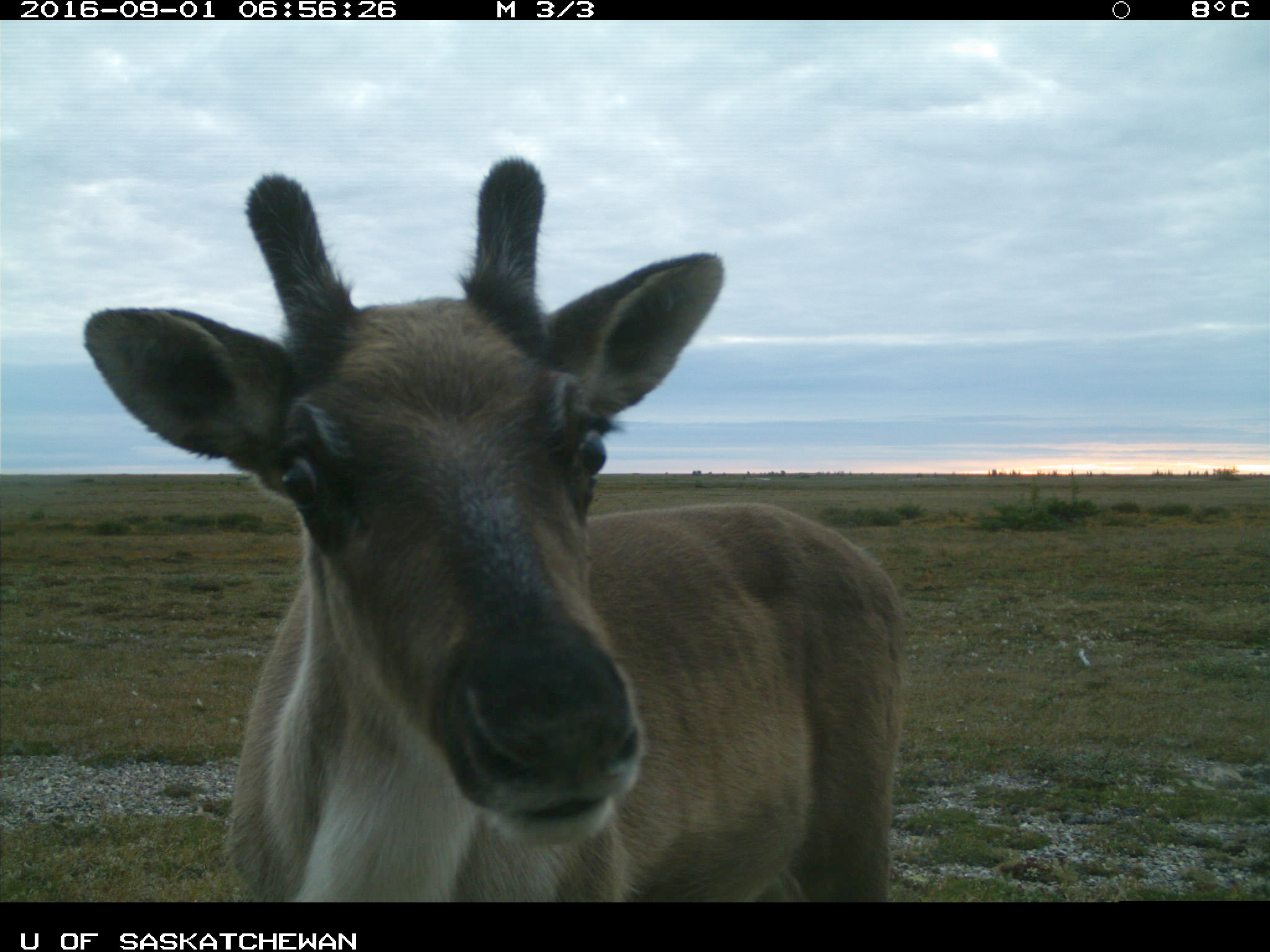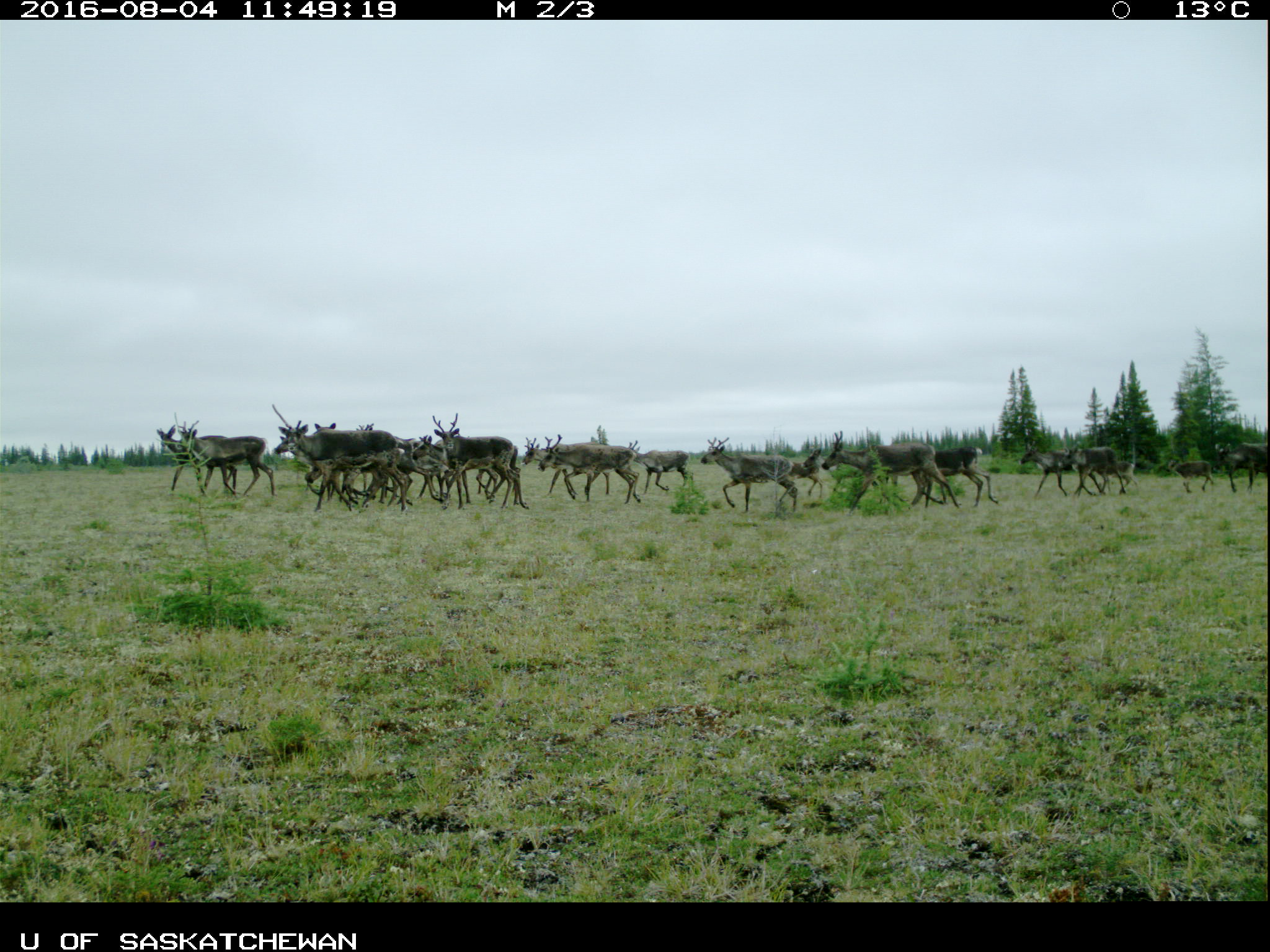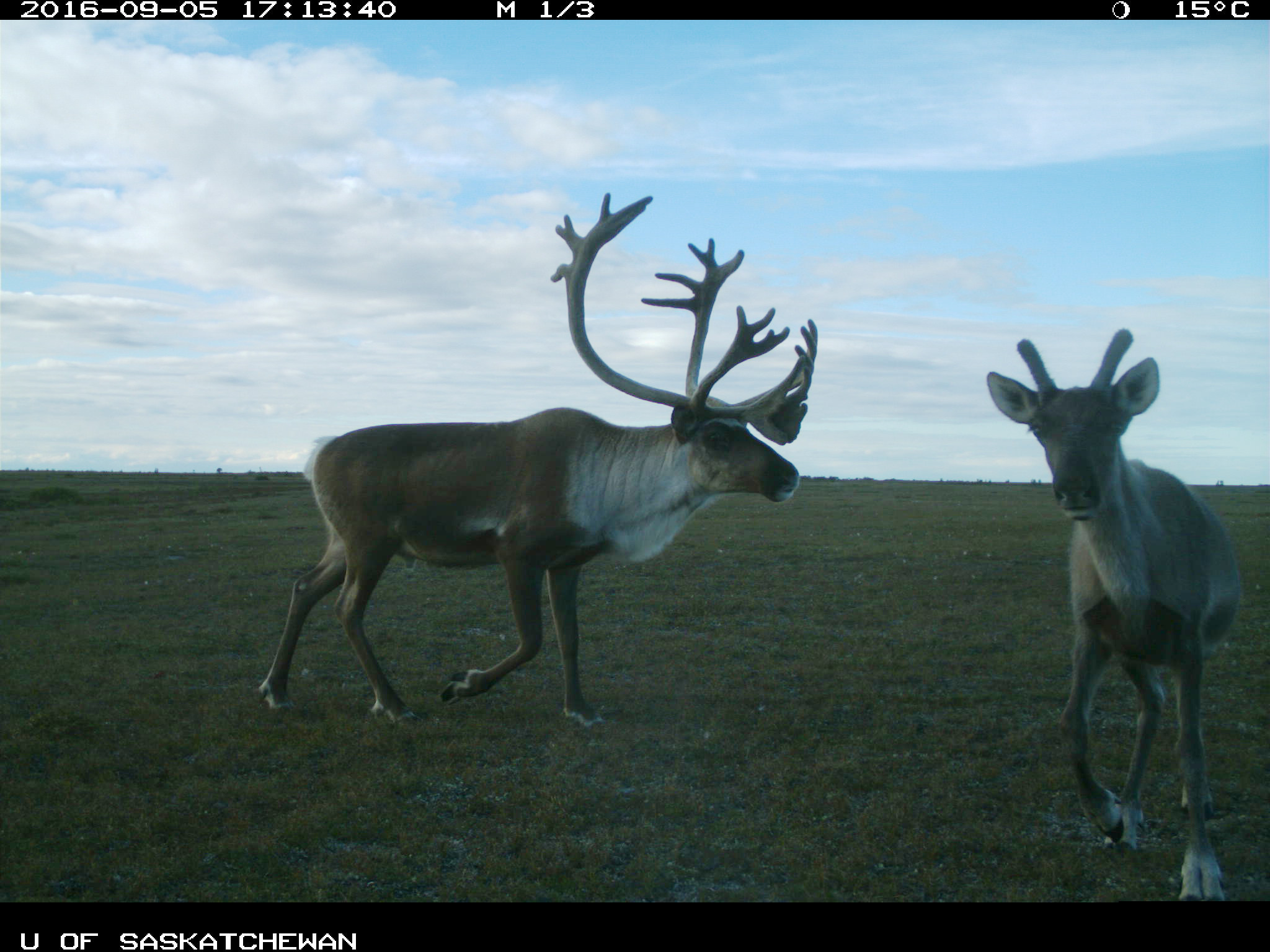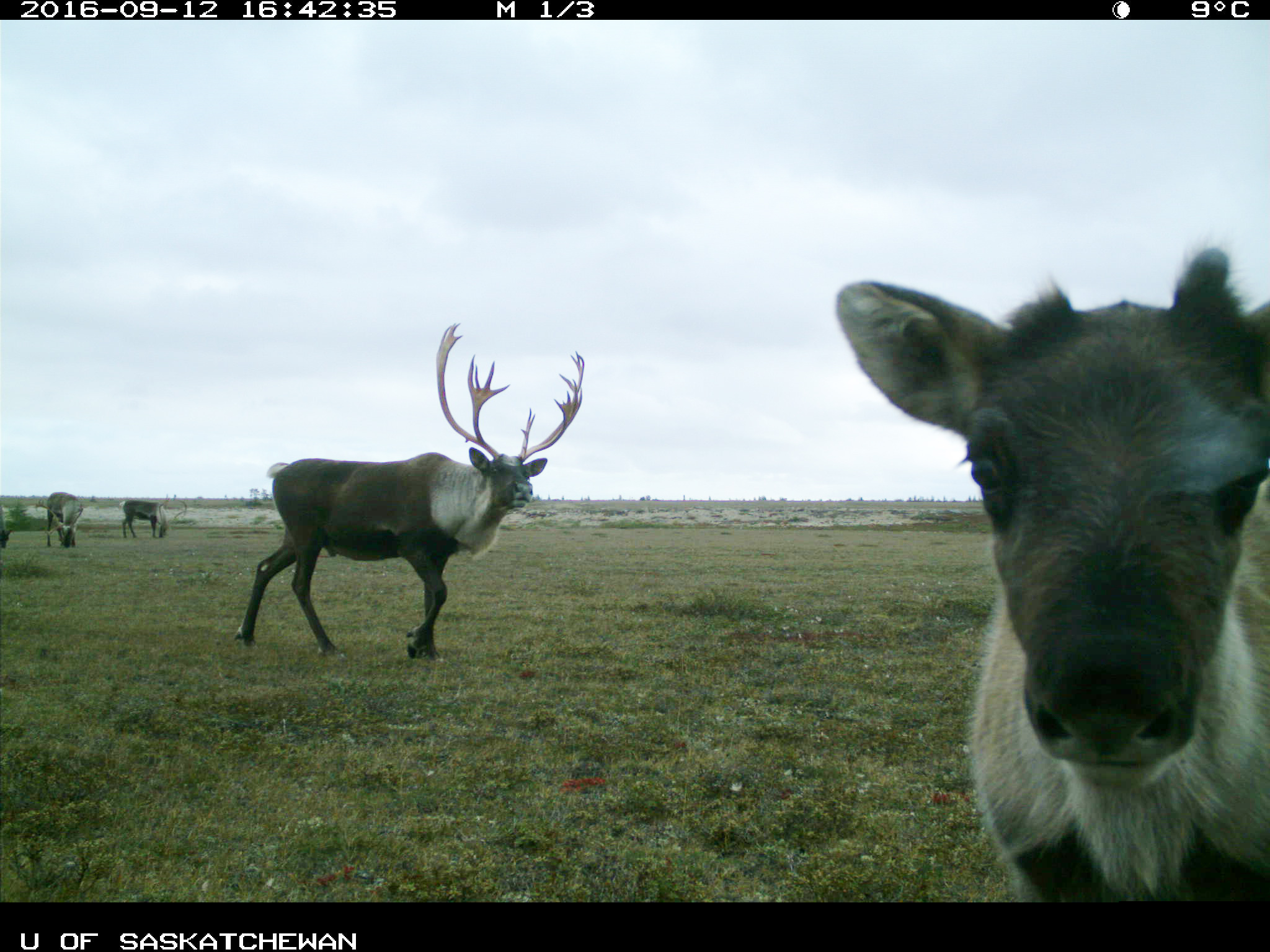Curious caribou
Wapusk National Park
Wapusk National Park is home to approximately 3,000 caribou (Rangifer tarandus) that make up the Cape Churchill caribou herd. This iconic species, featured on the Canadian 25 cent coin, can be found throughout the park and in the greater Churchill area.
Each year these animals use the beach ridges of Wapusk to travel as far as 200 km between their winter and summer ranges. The Cape Churchill caribou population spends the winter months focused on staying warm, using the expansive peatlands to forage for lichens rich in carbohydrates. In the spring, the north-eastern corner of the park serves as calving grounds for the caribou—caribou herds are normally named after the area they calve in. Caribou exhibit ‘synchronous calving’ behaviour, meaning that they migrate to the same general area each year and give birth at around the same time. This is to overwhelm the predators in the region to ensure that many calves will survive. Female caribou have one calf per year. Calves are able to walk and run almost immediately after being born. Wolves are the main predator on caribou, but in Wapusk, polar bears have been seen stalking and chasing caribou and occasionally they do get one.
Caribou are the same species as reindeer and the only member of the deer family (Cervidae) where both males and females have antlers. Caribou shed and regrow their antlers yearly. In Wapusk, we can see where the calving areas are because females shed their antlers after the calves are born; and we can see the mating areas because males shed their antlers after the rut. Caribou and several small mammal species are known to chew on discarded antlers as a source of calcium and other minerals.
Check out some of the curious caribou that stopped by our cameras in 2016-2017!
Wapusk National Park is home to approximately 3,000 caribou (Rangifer tarandus) that make up the Cape Churchill caribou herd. This iconic species, featured on the Canadian 25 cent coin, can be found throughout the park and in the greater Churchill area.
Each year these animals use the beach ridges of Wapusk to travel as far as 200 km between their winter and summer ranges. The Cape Churchill caribou population spends the winter months focused on staying warm, using the expansive peatlands to forage for lichens rich in carbohydrates. In the spring, the north-eastern corner of the park serves as calving grounds for the caribou—caribou herds are normally named after the area they calve in. Caribou exhibit ‘synchronous calving’ behaviour, meaning that they migrate to the same general area each year and give birth at around the same time. This is to overwhelm the predators in the region to ensure that many calves will survive. Female caribou have one calf per year. Calves are able to walk and run almost immediately after being born. Wolves are the main predator on caribou, but in Wapusk, polar bears have been seen stalking and chasing caribou and occasionally they do get one.
Caribou are the same species as reindeer and the only member of the deer family (Cervidae) where both males and females have antlers. Caribou shed and regrow their antlers yearly. In Wapusk, we can see where the calving areas are because females shed their antlers after the calves are born; and we can see the mating areas because males shed their antlers after the rut. Caribou and several small mammal species are known to chew on discarded antlers as a source of calcium and other minerals.
Check out some of the curious caribou that stopped by our cameras in 2016-2017!
- Date modified :





